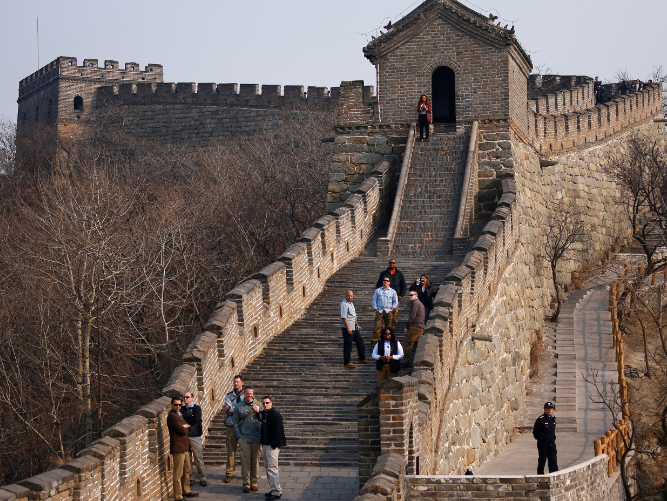One of the most magnificent man-made structures in the world, the Great Wall of China is threatened by the encroachment of urban expansion. Roughly 30 percent or around 2,000 kilometers of the ancient fortification has disappeared in the recent years.
According to statistics collated by the State Administration of Cultural Heritage, a total length of 1,961 kilometers of the Wall has already disappeared, while 1,185 kilometers of the Wall are in a bad state of disrepair.
Poor local residents are the number one threat that the 8,000-kilometer Wall faces today, as these people pilfer bricks from the fortification to use in the construction of their own homes. Some locals, on the other hand, steal bricks to sell for additional income.
"Residents who live along the Great Wall used to pull down bricks to build houses and some sections of the Great Wall were destroyed during urban expansion or the building of roads," said Cheng Dalin, a member of the Great Wall research committee with the Chinese Association of Relics.
Adding to the great threat of human activities are the tourists who dare explore the unprotected sections of the Great Wall, which leads to more damage, according to a report by the Beijing Times.
The forces of nature also pose a grave threat.
"Natural damage, like lightning, earthquakes or floods, remains another threat to the Great Wall. Governments should take different measures considering various climate and geographic conditions," said Xe Xinyu, a Great Wall protection specialist from the Ningxia Museum.
Although the government has already imposed sanctions on people who steal bricks from the Great Wall in Sept. 2006, no concrete organization is present to enforce rules, according to Jia Hailin, director of cultural relics protection department at the Jinshaling Great Wall scenic area located in Hebei Province.
"Damage could only be reported to higher authorities and it is hard to solve when it happened on the border of two provinces."




























